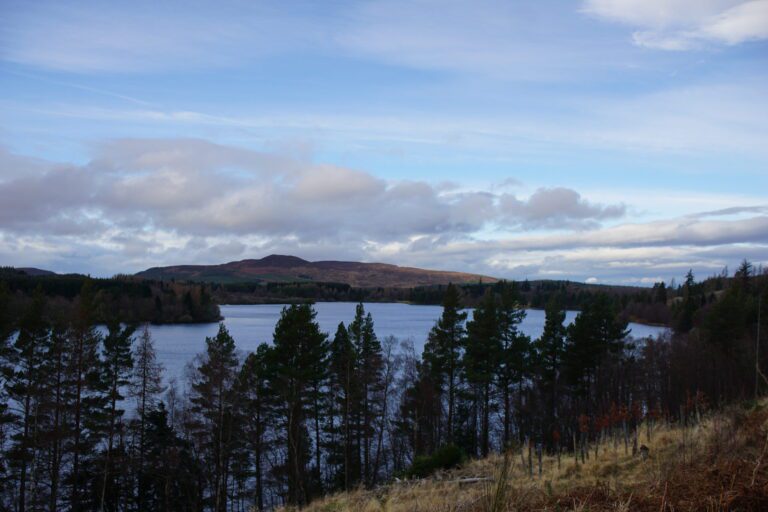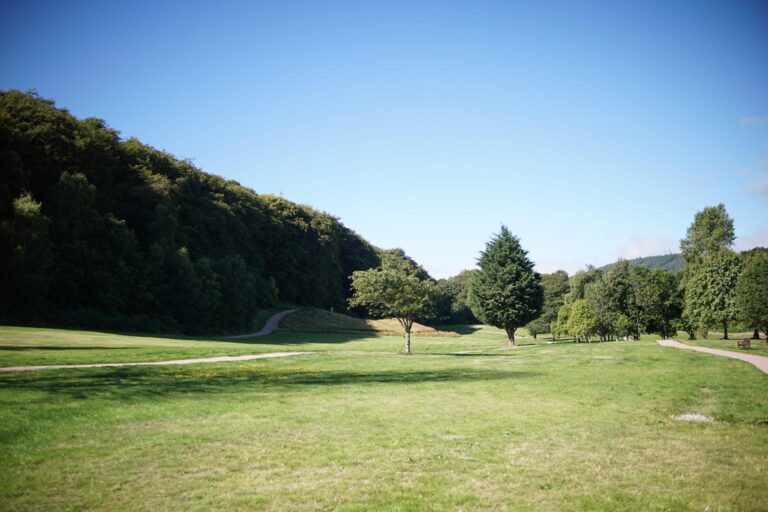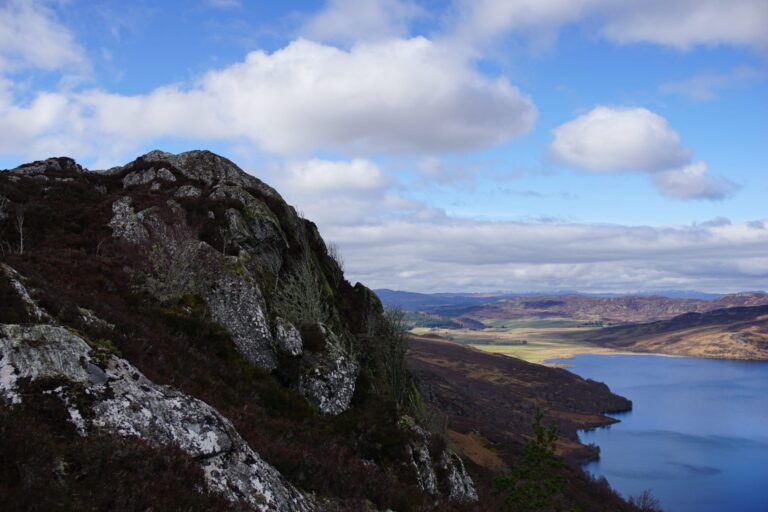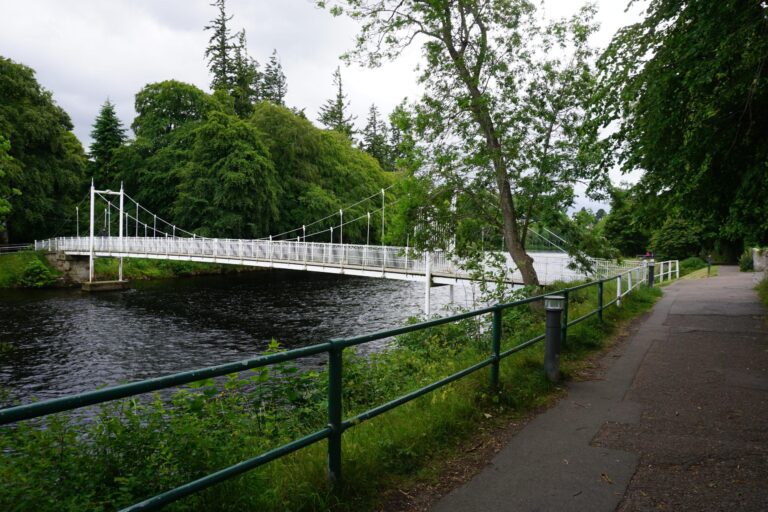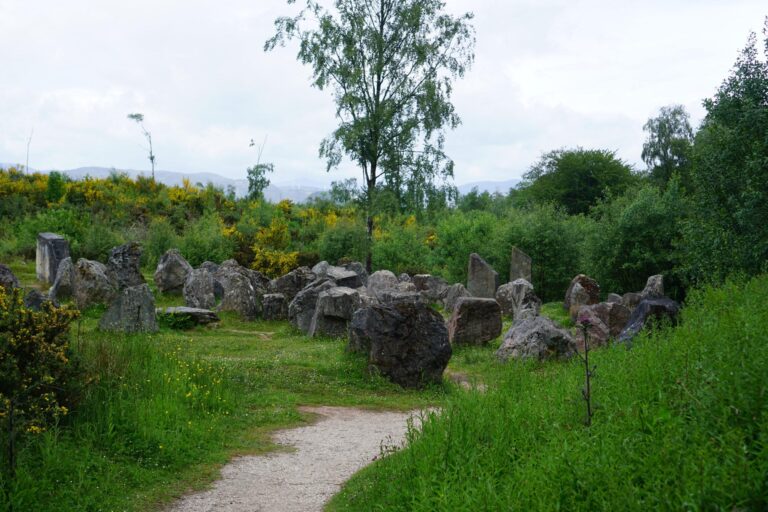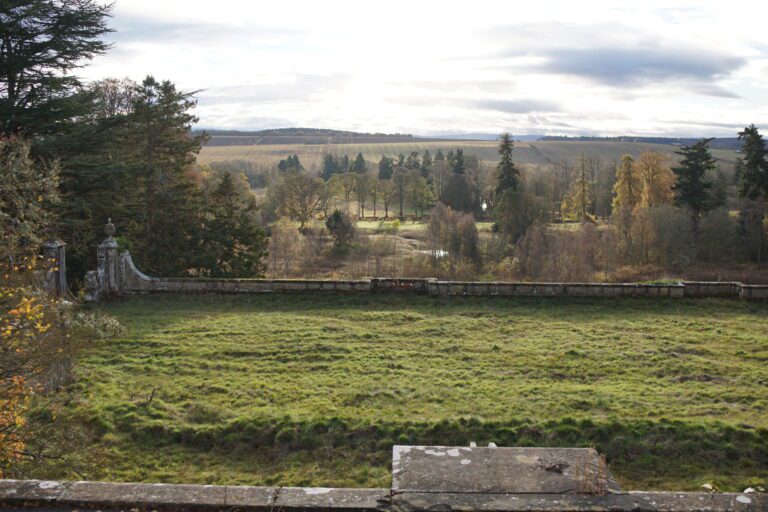Culloden Wood Walk: The Prisoners’ Stone and St Mary’s Well

Culloden Wood is a popular walking area a little to the west of the battlefield site. There are some interesting sites to visit in the woods, including a ‘Clootie Well’ and the prisoners stone, where Jacobite prisoners from the battle of Culloden may have been executed.
Culloden is a bit higher up than Inverness and this area can hold the snow in winter time, which makes for a magical walk, but it can be slippery!
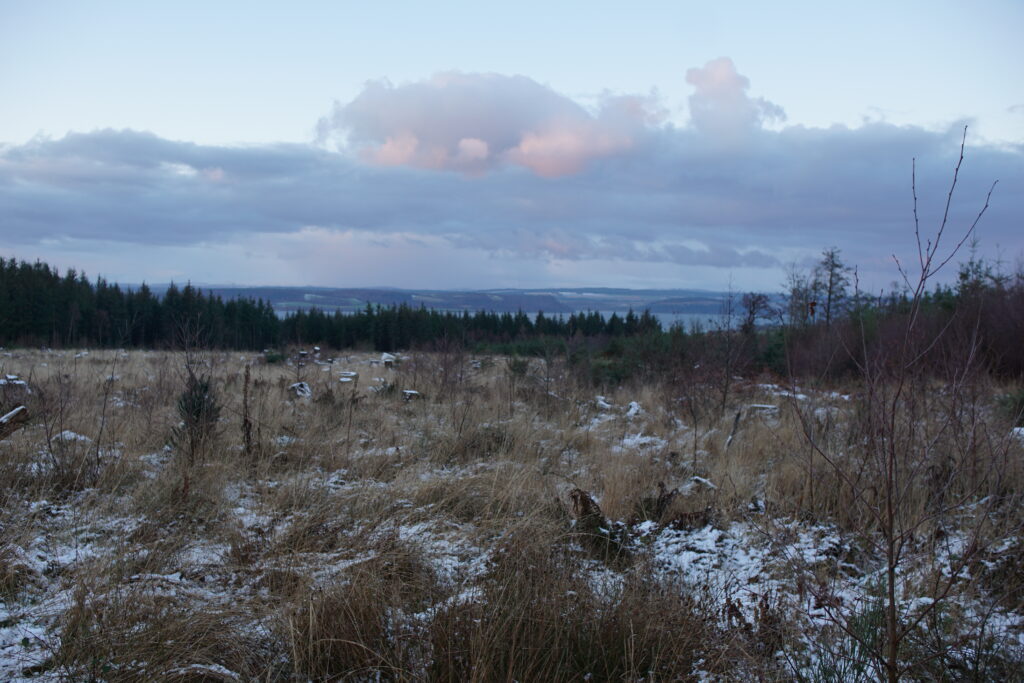
Distance: About 2 miles / 3.25km
Parking: From the A96, continue out of Inverness past the shopping centre and turn right at the next roundabout onto Barn Church Road. After about a mile, turn right at traffic lights onto Tower Road, and head up hill. The Culloden Wood car park is a small turning on the left just opposite the Murray Road turn on the right. There is a green Forestry sign. The lane is quite potholed!
Amenities: No toilets or other amenities at the car park. Shops and restaurants in Culloden.
Pushchair/bike-friendly? We did take an all-terrain pushchair with us but I couldn’t recommend it. There are some fairly steep slopes, and bumpy paths. The train bridge in particular is hard to navigate with a pushchair due to the uneven surface and slope.
Culloden Wood: The route
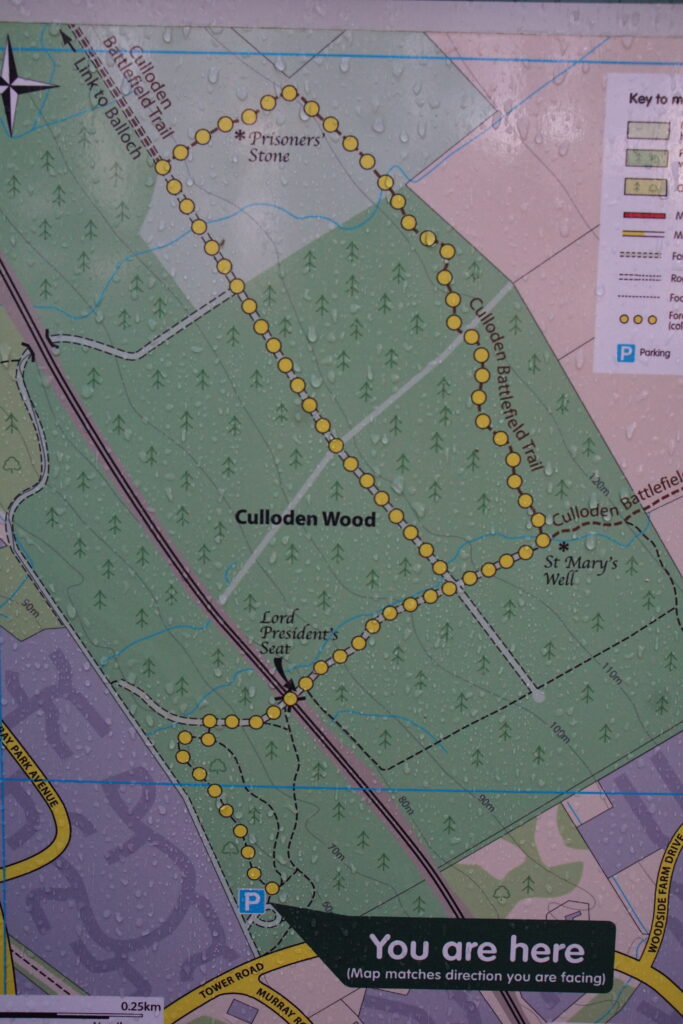
- Take the yellow waymarked trail from the car park and follow it as it zigzags up through the woods to reach a bridge over the Inverness-Perth trainline. A great spot to watch for trains!

2. On the other side of the bridge, a broad and leafy forest track climbs upwards through the woods. There is a stream down to the left of the path.

3. At a large crossroads, turn left on another forestry track, and follow this until it reaches an area of open moorland.
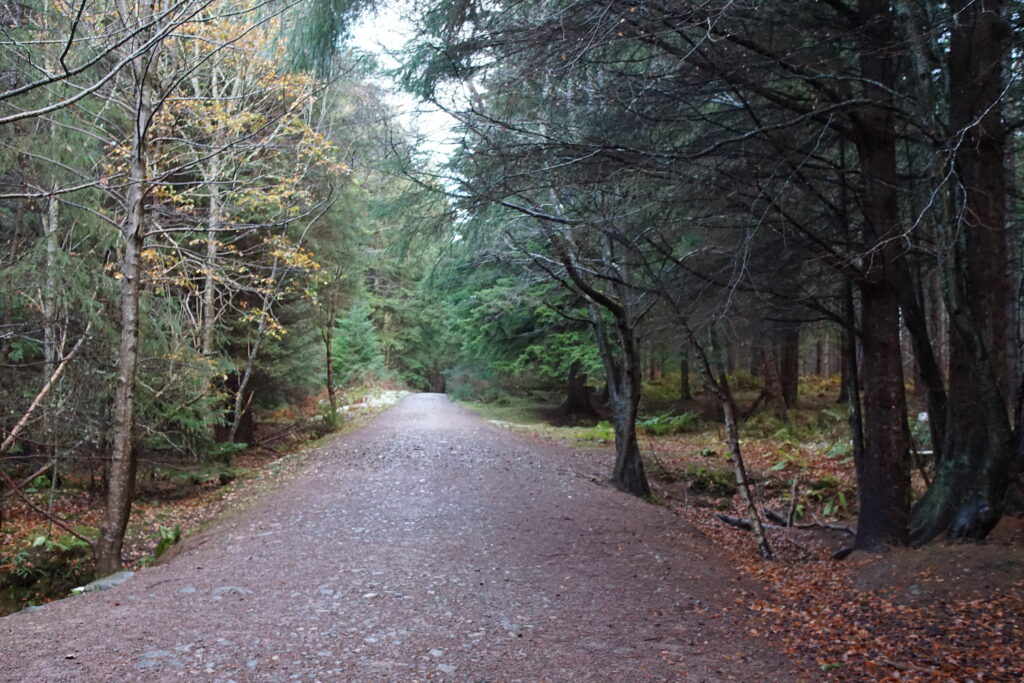
4. The terrain here is reminiscent of nearby Culloden Battlefield, with windswept open moorland and scrub.
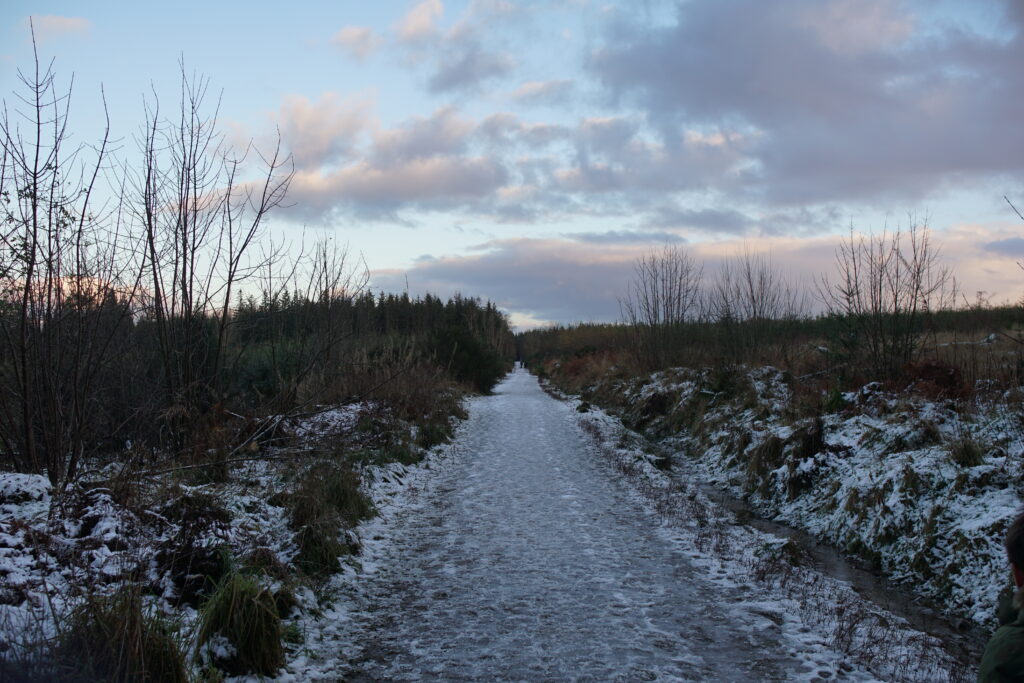
5. Look out for a turning to the right signed for the Prisoners’ stone. It is the second turning, and comes shortly after the path re-enters woodland. Follow a narrower track uphill, and look out for the Prisoners’ stone on your right. (See this section for the history)

6. Continue along the track. This is the high point of the walk, and there are some lovely views down across the Moray Firth to the Black Isle.

7. The path re-enters the wood, and becomes quite muddy at points, with some short slopes up and down. After a little while you will arrive at a junction with a larger path, with St Mary’s Well on the other side, surrounded by a circular stone well. Turn right down the larger path to return to the train bridge, and home.
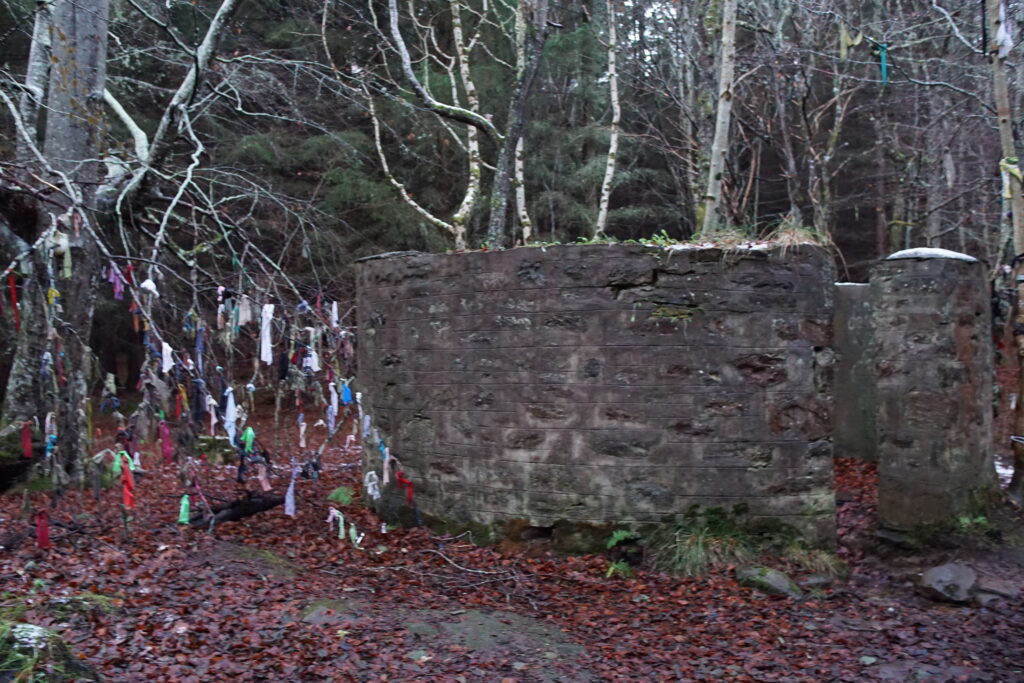
Culloden Wood: What is the terrain like?
Much of the route is on broad forestry tracks. There are some trickier sections. The train bridge is often very slippery with ice in the winter. I have navigated it several times with a pushchair but wouldn’t recommend it

The section running up to the Prisoners’ stone is narrower and rocky in places, but still generally a good quality path.
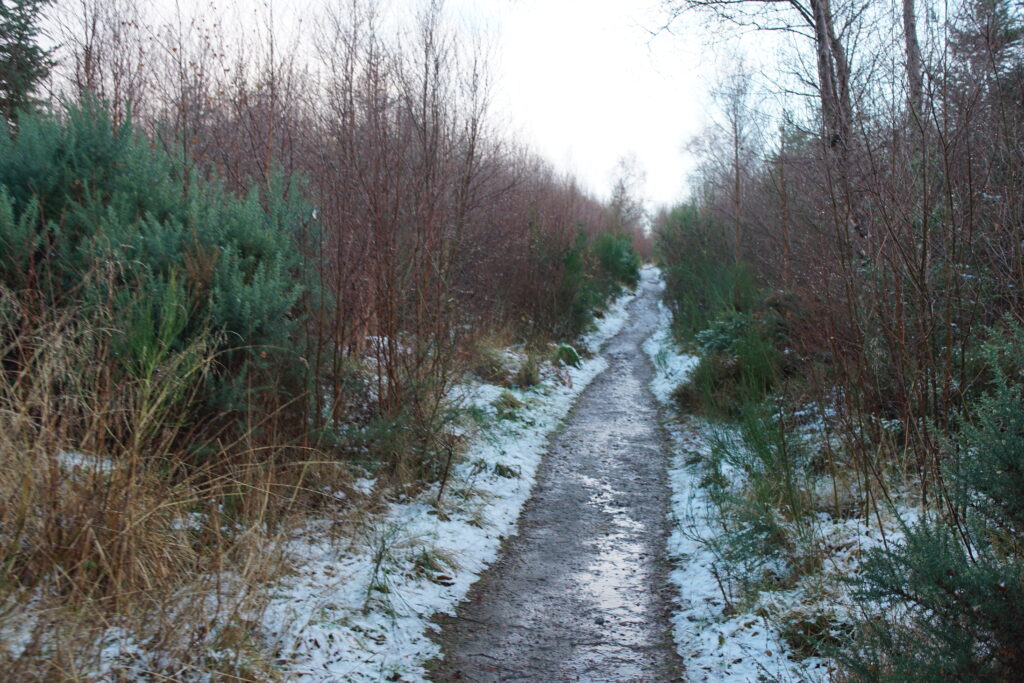

Up at the top of the woods there are some steepish muddy slopes and places where it can be quite boggy in wet weather. I didn’t feel it was particularly safe with a pushchair in icy conditions. We also had a couple of tumbles into surprisingly deep muddy puddles, so if you are coming with small children, I’d recommend waterproof trousers!
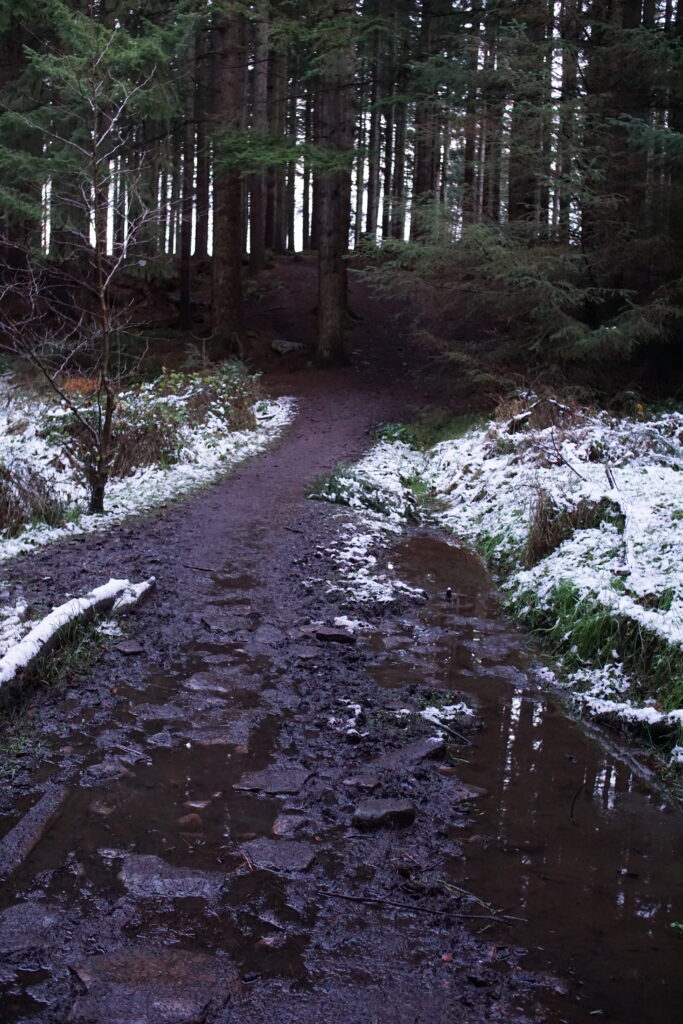
Culloden Wood: The Prisoners’ Stone
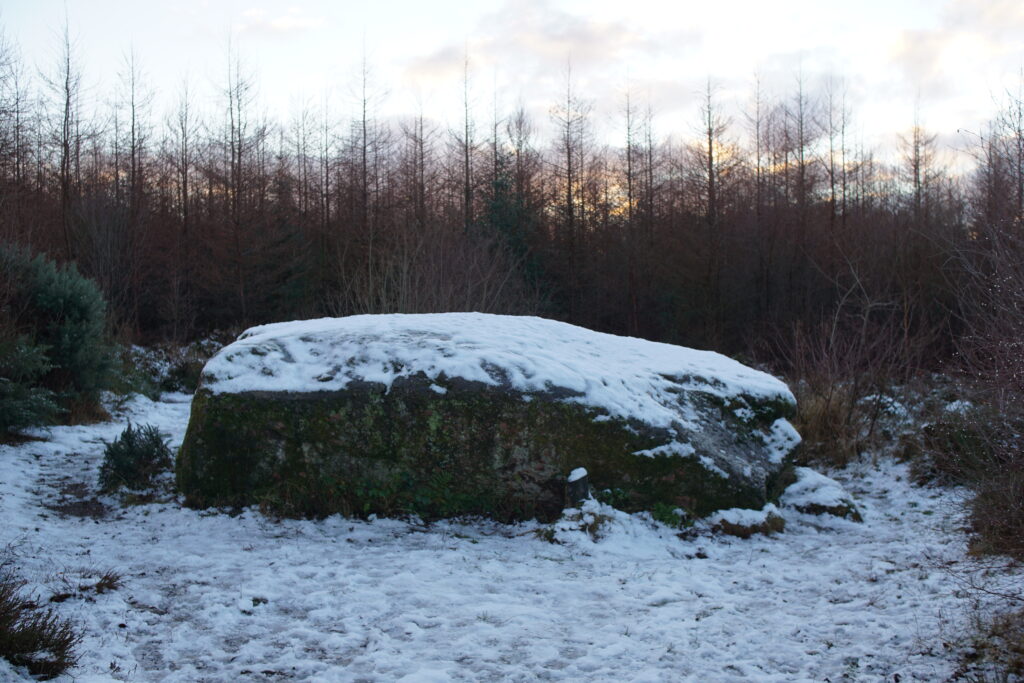
The Prisoners’ Stone is a large boulder with an unhappy story. The local tradition is that 17 Jacobites (Bonnie Prince Charlie’s soldiers) were taken captive after the Battle of Culloden and held in the cellars of nearby Culloden House for several days. They were then taken out to this stone in carts and shot. One man survived and was able to crawl away and tell the tale of what had happened.
The story is a sad one, but it also raises questions for me. Why were the men brought here from Culloden House (three quarters of a mile away)? Where were they buried? Were they men of rank? Local prisons were apparently overflowing after the battle, and many Jacobite soldiers either deported or hanged. The original battlefield site extended further in this direction than the current NTS field, and injured soldiers apparently came to bathe their wounds in the waters of St Mary’s Well.
Pondering these questions, I came across this reference in The Lyon in Mourning Vol II by Robert Forbes, which is nearly contemporary, being from a letter written in 1749. I think this is probably the origin of the tale, though it is not clear whether the Prisoner’s Stone was the location. The account is sad, and very bloody:
John (Alexander) Fraser….was an officer of the Master of Lovats regiment. He was very early shott through the knee at the battle of Culloden. He was carried off in the heat of the action, and left at a dike side pointing towards Culloden House. Some hours after the defeat of the Highland army, he with other seventeen wounded officers of that army (who were either carried or made their escape towards a little plantation of wood near to the place where Fraser lay) were carried to the closs and office houses of Culloden, where they remained for two days wallowing in their blood and in great torture, without any aid from a doctor or surgeon, tho’ otherwise kindly entertained by Mr. Thomas Stewart, chamberlain and chief housekeeper to the late Lord President, and this he did to some at the hazzard of his life. The third day Fraser and the other sevinteen wounded officers were by a party of soldiers, under the command of a certain officer, put on carts tyed with ropes, and carried a little distance from the house to a park dike, and there placed against the wall or park dike, when the officer who commanded the party ordered Fraser and the other prisoners to prepare for death, and all who were able bended their knees, and began to pray to God for mercy to their souls. In a minute the soldiers who conducted them were ordered to fire, which they did, and being at the distance only of two yards from the breasts of the unhappy prisoners, most of them all expired in an instant. But such was the humanity of the commanding officer, as thinking it right to put an end to so many miserable lives, that he gave orders to the soldiers to club their musketts and dash out the brains of such of them as he observed with life, which accordingly they did. And one of the soldiers observing John Fraser to have the signs of life after receiving a shott, he struck him on the face with the butt of his muskett, broke the upper part of his nose and cheek-bone, and dashed out one of his eyes, and left him for dead. In this miserable situation a certain young nobleman riding out by the house of Culloden and park dike, he observed some life in Fraser…..[the account continues to tell how the man carried Fraser away and his life was saved, though he was severely disabled by his wounds].
Culloden Wood: Things to look out for
Look out for berries in season, giant uprooted trees, woodland streams, trains. If you come in the winter time, you might see a wild Christmas tree complete with baubles!






You might also enjoy these other short walks in and around Inverness.

